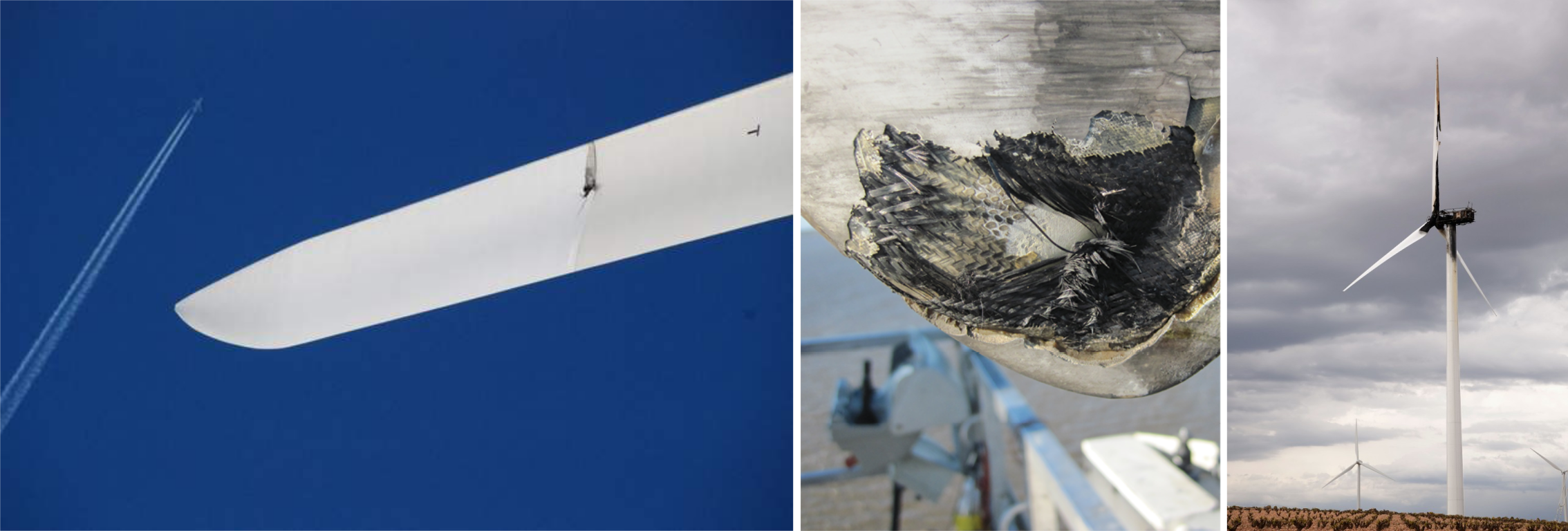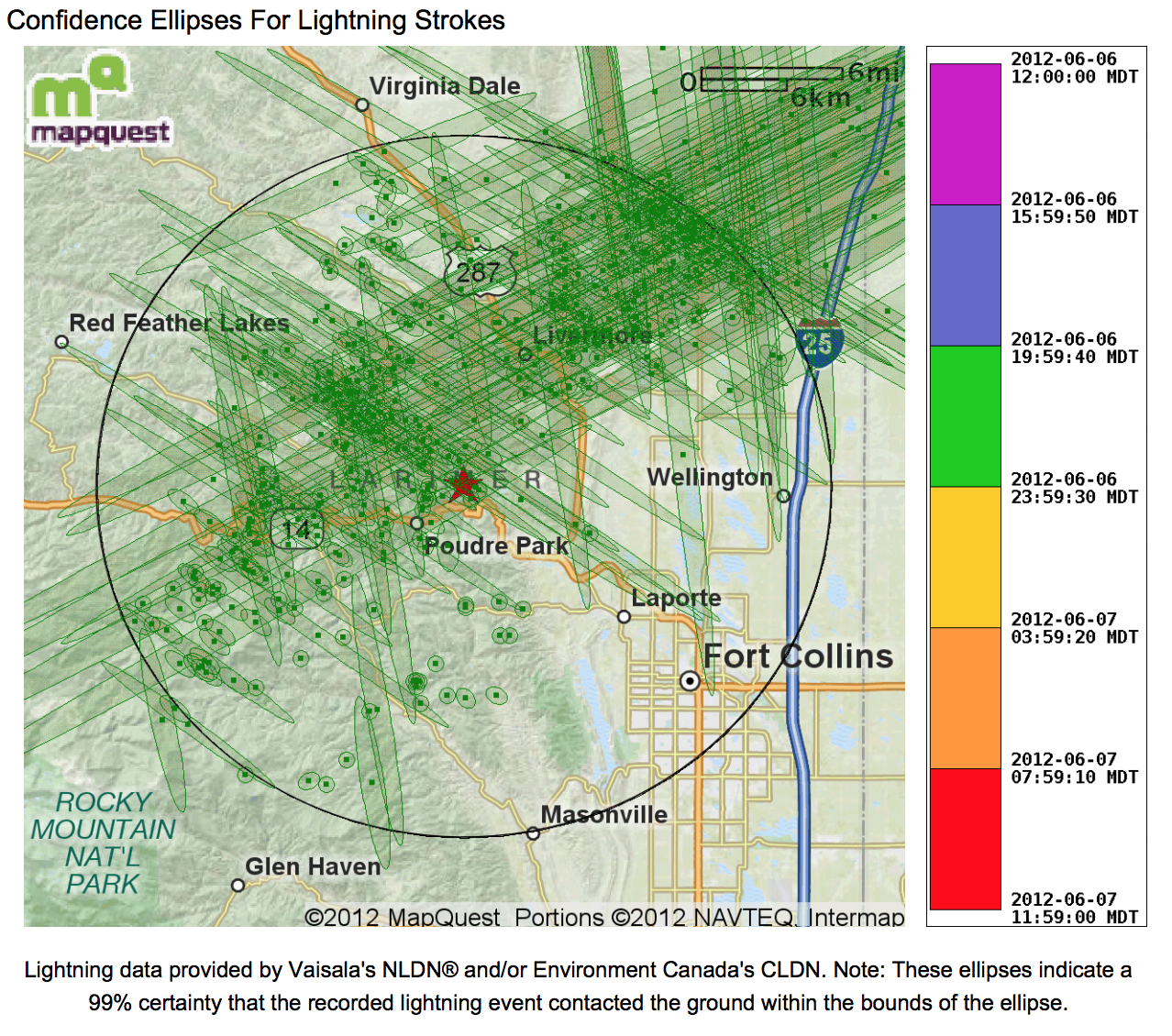When Lightning Strikes
By Jon Engelsman
April 24, 2018
An engineering journey after lightning destroys a wind turbine blade.
 Gizmodo
Gizmodo
What An Inquisitive Engineer Does When Facing The Unknown
When I run into a new problem, particularly one that is not well understood, I energetically throw myself into an incredibly deep process of learning. As a lead engineer for a large fleet of utility-scale wind turbines at an international renewable energy operator, this process is probably best illustrated from the time that I was faced with a bolt from the blue.
After lightning strikes were suspected in over $1 million of damage to wind turbine blades in our fleet, I was asked the simple question, “What happened?” Knowing very little about lightning at the time, I jumped at the opportunity to learn more.
So What Happened?
Soon after hearing that something had happened to a turbine, I was sent photos of the actual damages from site technicians. In a lot of these situations, the what and why takes a back seat to getting things back up and running because like most operational assets, they only generate revenue when they’re up and running.
The extent to which lightning can damage wind turbine blades varies from minimal to severe, ranging from small surface puncture holes in fiberglass shells, deeper structural damage to carbon fiber and even uncontained electrical fires in some cases.

Lightning Damage to Wind Turbines - Source, Source, Source
As the repair plan slowly came together, I knew that figuring out what had actually happened and why would be crucial to mitigating any potential future damages to the fleet.
The photos taken by the technicians showed the damages to the turbine. But what did the turbine think had happened? Checking telemetry and event logs from the turbine that was damaged, I could see some alarms and abnormal changes in operation. Combined with information from the site technicians about when they noticed the damages, I knew I had a good time-frame of interest of when something might have happened.
Down the Rabbit Hole
Did you know that you can order a report online that will tell you all of the lightning strikes that happened at a specific location and time?
 Vaisala
Vaisala
A colleague had heard about these reports and suggested I look into it when I was gathering more information. But after ordering the report, it came back showing no lightning strikes! So I picked up the phone and called the company that provided the report, eventually making my way to a long, in-depth conversation about lightning physics and how lightning detection systems work.
This conversation is really what sparked a much deeper quest to learn more, and I’m very grateful for the time that this meteorologist took to explain everything to me.
More and More
As I kept persistently learning more and more, I started building a new technical map from all of the details. And I looked for information everywhere I could.
- Wind turbine event logs and telemetry
- Lightning detection location data
- Photos of damage to fiberglass and metallic structures
- Patent diagrams and manufacturer specifications for lightning protection systems (see image below)
- International standards for lightning protection
 US Patent US20170152839
US Patent US20170152839
I even trialed three different lightning strike data services from companies that run lightning detection systems in the US and globally, like Vaisala, Earth Networks and The Weather Company. These systems detect lightning all over the world and make that data available to customers via various interfaces (e.g. web API’s, socket connections, FTP’s, etc).
And I attended a conference in Estoril, Portugal specifically dedicated to lightning protection, meeting with industry experts to learn more about how lightning interacts with wind turbines and steps that can be taken to improve protection systems.

Fix the Fleet
All of the effort I put in to learning more about lightning ultimately paid off. For one, it allowed me to have more in-depth conversations with the manufacturer about their lightning protection systems, to evaluate the potential for future risk to the rest of our fleet and make plans to retrofit the system for improved protection.
It also allowed me to develop new processes to protect the fleet from future damages and unexpected costs. I worked with our project managers and the manufacturer to plan a new spare part supply chain process in order to minimize operational losses in the event of future downtime. And I developed a prototype lightning strike notification system, for early identification and proactive inspections to catch any damages before they got worse, mitigating costs from future lightning strikes.
Conclusion
I’m energized by these types of projects, making sense of previously unknown issues through detailed technical research and building new tools and strategies. Never satisfied with the status quo and always looking to the horizon for new challenges, I aim to keep innovating and improving on technology systems.
- Posted on:
- April 24, 2018
- Length:
- 4 minute read, 798 words
- Tags:
- lightning
- See Also:
- All the Ways We See Lightning